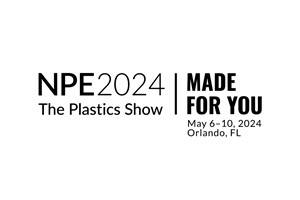Euro Crisis Hovers Over Medical Forecast
Wood on Plastics
Our outlook for U.S. output of medical equipment and supplies in 2012 calls for a gain of 5%. This follows an expansion of just a little less than 5% in 2011.
Our outlook for U.S. output of medical equipment and supplies in 2012 calls for a gain of 5%. This follows an expansion of just a little less than 5% in 2011. This forecast is based on our expectations for a steadily improving U.S. economy during the next couple of years, and also the long-term trend of an aging U.S. population.
As the accompanying chart illustrates, there is a three- to four-year cyclical pattern in the growth trend for this industry. We expect the growth rate to hit its next cyclical peak in the middle of 2012 and then decelerate in the latter months of this year. This does not mean that output levels will actually decline, but rather the rate of growth will moderate compared with the previous year.
The chart shows a couple of other trends that bear mentioning. First, the rate of growth in the medical equipment sector hardly ever goes negative. The annual average increase for the past decade or so has been over 4%. This is well above the annual growth rate for most other types of consumer products and it is also stronger than the overall rate of expansion in the total U.S. industrial sector.
The second thing to notice is that the growth trend in this industry is clearly cyclical, but the cycle does not correspond to the normal 大象传媒 or industrial cycles in the U.S. This is primarily due to a combination of several factors:
•These products tend to be tightly regulated by the Federal government;
•The industry is significantly driven by advances in technology;
•These products are in most cases paid for by third parties (insurance companies or Medicare and Medicaid). Therefore, it is not a true capitalist market.
Looking ahead, there are some unusual circumstances for 2012 to which suppliers to this industry must pay heed. Of immediate concern is the current recession in Europe. The European Union (EU) is a huge importer of American-made medical products, but Europe is at present struggling with a financial crisis.
Another situation that is on the horizon for suppliers of medical equipment is the rapidly changing regulatory environment in the U.S. Starting in 2013, medical device manufacturers will have to pay an excise tax of 2.3% on all medical devices sold here. This is mandated by President Obama’s new healthcare plan. Opponents of this legislation have vowed to repeal it, but this is entirely dependent on the outcome of the fall elections.
Another regulatory change is the effort by the FDA toward greater transparency about where and how medical supplies, devices, parts, materials, etc. are manufactured. This will increase the amount of documentation (red tape) involved for all suppliers to this industry, and this will no doubt raise the cost of doing 大象传媒.
Yet despite the additional regulatory burdens, one thing remains certain—it may be expensive to make good medical equipment, but it is even more costly to make bad equipment.
WHAT THIS MEANS TO YOU
•A trend towards increased “biomimicry” will garner greater attention in the medical industry. This means processors and OEMs will be working to design products that are more “natural” in both their function and their disposal.
•A recurring theme in the debate on cost reimbursement from Medicare and other insurance providers will focus on medical devices that have high upfront costs but save money over the lifetime of the user. If those are the kinds of products you make, keep making them.
•Low-cost suppliers will be supplanted by suppliers that can offer higher accountability. Processors will be accountable for not only their clean rooms, but also the clean rooms of their material suppliers
Related Content
Processing Activity Dips in May
Plastics processing took a downturn in May, the first appreciable dip since November 2023.
Read MoreProcessing Megatrends Drive New Product Developments at NPE2024
It’s all about sustainability and the circular economy, and it will be on display in Orlando across all the major processes. But there will be plenty to see in automation, AI and machine learning as well.
Read MorePlastics Index Shows Fourth Consecutive Monthly Gain
December reading hints at slowing contraction as plastics industry outlook improves
Read MorePlastics Processing Index Cools with 45.3 April Reading
Processors are feeling impact of tariff uncertainty and market hesitancy as new orders slow
Read MoreRead Next
Beyond Prototypes: 8 Ways the Plastics Industry Is Using 3D Printing
Plastics processors are finding applications for 3D printing around the plant and across the supply chain. Here are 8 examples to look for at NPE2024.
Read MoreFor PLASTICS' CEO Seaholm, NPE to Shine Light on Sustainability Successes
With advocacy, communication and sustainability as three main pillars, Seaholm leads a trade association to NPE that ‘is more active today than we have ever been.’
Read MoreLead the Conversation, Change the Conversation
Coverage of single-use plastics can be both misleading and demoralizing. Here are 10 tips for changing the perception of the plastics industry at your company and in your community.
Read More











